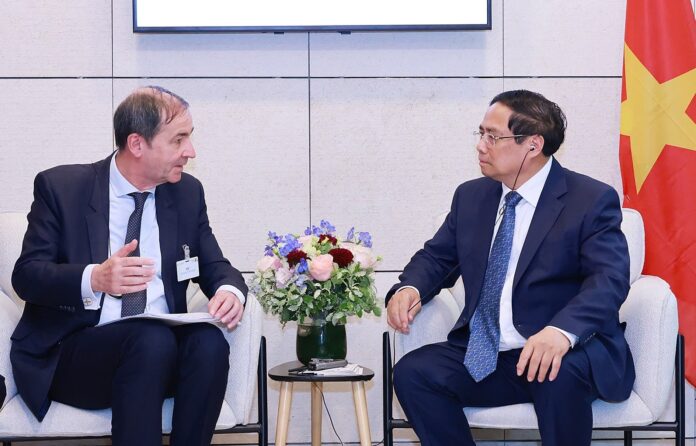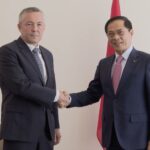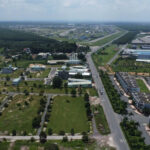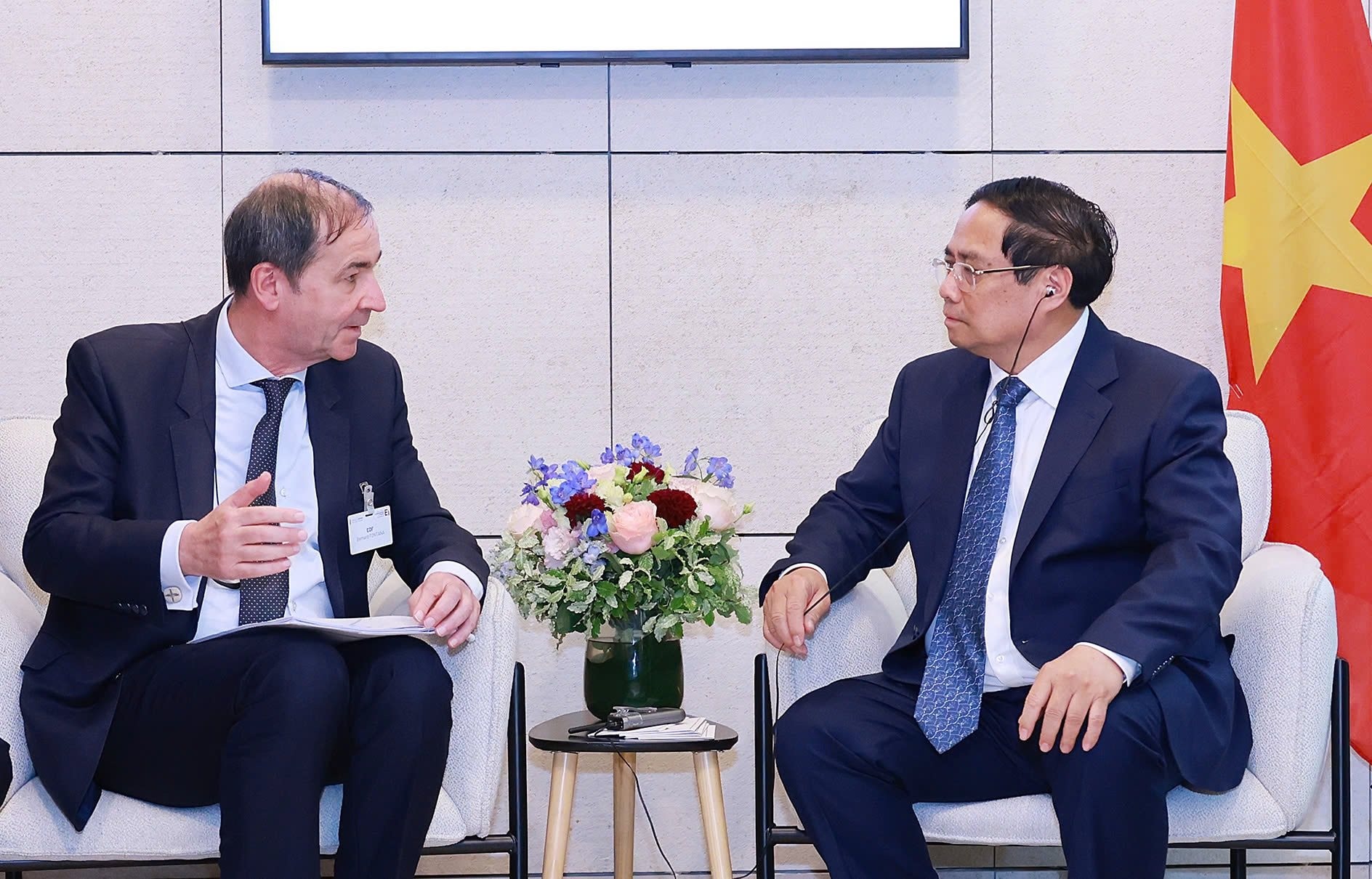
Prime Minister Pham Minh Chinh meets with Mr. Bernard Fontana, Chairman and CEO of EDF Group. Photo: VGP
The discussion focused on nuclear power and high-speed rail projects connecting the North and the South of the country.
On the morning of June 11th, local time (afternoon of the same day in Hanoi), as part of his bilateral activities in France, Prime Minister Pham Minh Chinh met with leaders of several leading French and European corporations, including the energy giant EDF.
During the meeting, Mr. Bernard Fontana, Chairman and CEO of EDF Group, discussed the Son My 1 project and expressed his interest in collaborating on nuclear power, renewable energy, and other areas such as telecommunications and artificial intelligence in Vietnam.
The Prime Minister welcomed the proposals and suggested that EDF coordinate with Petrovietnam, Viettel, and other partners to implement cooperation in these fields. Regarding the nuclear power project, he requested EDF to have concrete discussions with the Ministry of Industry and Trade and relevant partners to clarify technology, capital sources, and human resource training.
EDF’s leadership agreed with the Prime Minister’s suggestions and expressed their readiness to strengthen Vietnam’s capabilities in their areas of expertise, including technology and human resource development.
Mr. Bernard Fontana, Chairman and CEO of EDF Group, provided an overview of the company. EDF is a multinational energy corporation, majority-owned by the French Government. It is the world’s first direct CO2 emission-free electricity producer, a leading nuclear operator, and a top renewable energy producer in Europe. EDF currently operates in over 20 countries and has been present in Vietnam since 2000.
In fact, EDF successfully completed the construction of the Phu My 2 Thermal Power Plant (715 MW) – one of the first BOT power projects in Vietnam – back in 2005. Building on this significant achievement, by the end of 2018, the Group was granted permission to participate in the Son My 1 Gas Power Plant project (with a capacity of 2,250 MW, expected to be operational by 2030), alongside Pacific Corporation (Vietnam), Sojitz Corporation, and Kyushu Electric Power Company (Japan). In this project, EDF replaced the French company Engie.
The nearly 100-year-old conglomerate expresses interest in the North-South high-speed rail project

Prime Minister Pham Minh Chinh meets with Mr. Henri Poupart-Laffarge, CEO of Alstom Group. Photo: VGP
Also on the morning of June 11th (local time), the Prime Minister met with Alstom, a leading global provider of transportation solutions.
Mr. Henri Poupart-Laffarge, CEO of Alstom Group, shared that Alstom (founded in 1928) generated €18.5 billion in revenue in the 2024 financial year.
Alstom Group is keen to accelerate the construction of Hanoi Metro Line 3 – Phase 2, Ho Chi Minh City Metro Line 2, and other new lines by 2035, with a vision towards 2045. The Group expresses its interest in participating in the high-speed rail project connecting Hanoi and Ho Chi Minh City and is willing to share high-speed rail technology and collaborate with Vietnamese enterprises to develop the country’s railway industry.
Welcoming Alstom’s proposals, the Prime Minister emphasized that cooperation with France is an important part of implementing new railway projects in Vietnam. He requested that the Group work with the Ministry of Construction and relevant Vietnamese enterprises and units to initiate specific actions.
With its experience in Hanoi’s urban railway project, the Prime Minister stressed the need for faster and more efficient cooperation going forward. He suggested that Alstom transfer technology, provide preferential loans, and train human resources in the railway sector.
Alstom Group has had a presence in Vietnam for over 30 years. Since then, the group has actively contributed to the country’s infrastructure development, such as the modernization plan for the railway signaling and telecommunications system and the provision of core E&M equipment for Hanoi Metro Line 3 (Nhon – Hanoi Station), which began commercial operation in August 2024.
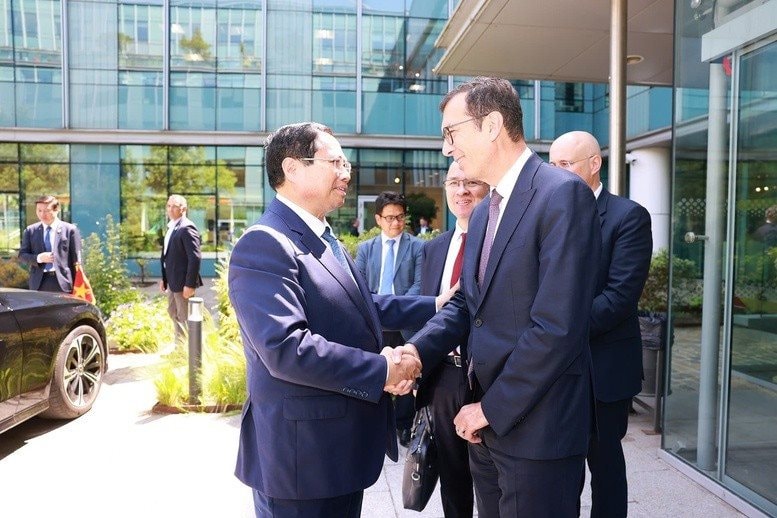
Prime Minister visits and works at SNCF, the French national railway company. Photo: VNA
On the same day, Prime Minister Pham Minh Chinh visited and worked with SNCF, the French national railway company. SNCF is a state-owned enterprise with over 80 years of experience, making it one of the world’s leading railway operators and managers. The French side (including SNCF) affirmed its readiness to support Vietnam in developing its railway infrastructure, especially high-speed rail projects.
Additionally, the Prime Minister met with the leadership of the Thales technology group. The group’s representatives proposed cooperation on telecommunications satellites, including the Vinasat 3 telecommunications satellite.
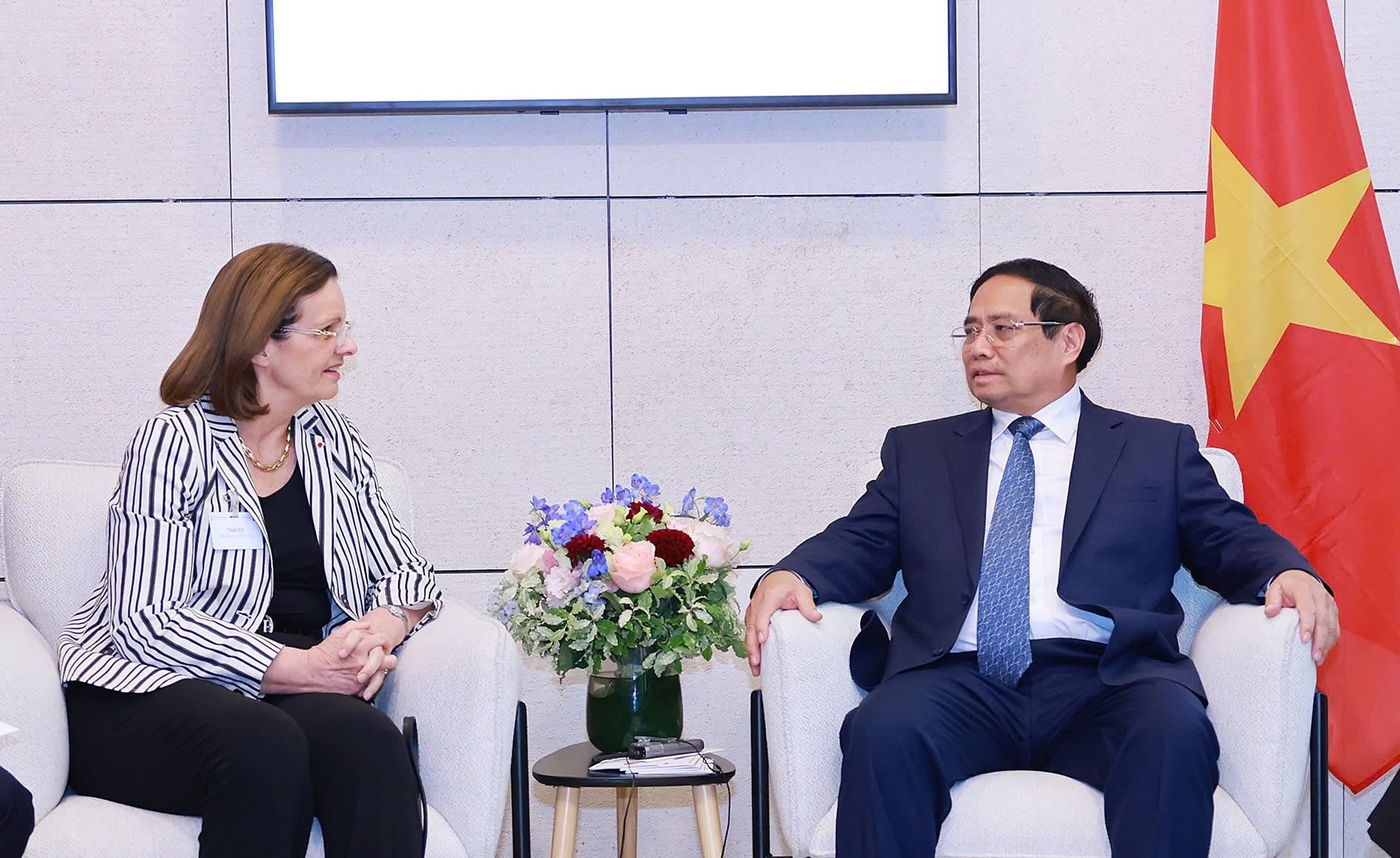
Prime Minister meets with the leadership of Thales Group. Photo: VGP
During the meeting with the Prime Minister, Mr. Wouter van Wersch, Chairman of Airbus, proposed cooperation in the field of space technology, particularly in providing advanced optical satellite solutions. Airbus also aims to collaborate with Vietnam on the use of environmentally friendly and fuel-efficient fuels, as well as the development of artificial intelligence.
Vietnam and France established diplomatic relations on April 12, 1973, and became Strategic Partners in 2013. In October 2024, the relationship was elevated to a Strategic Partnership, making France the first EU country to have such a relationship with Vietnam. In 2024, bilateral trade reached USD 5.42 billion, an increase of nearly 13% compared to 2023.
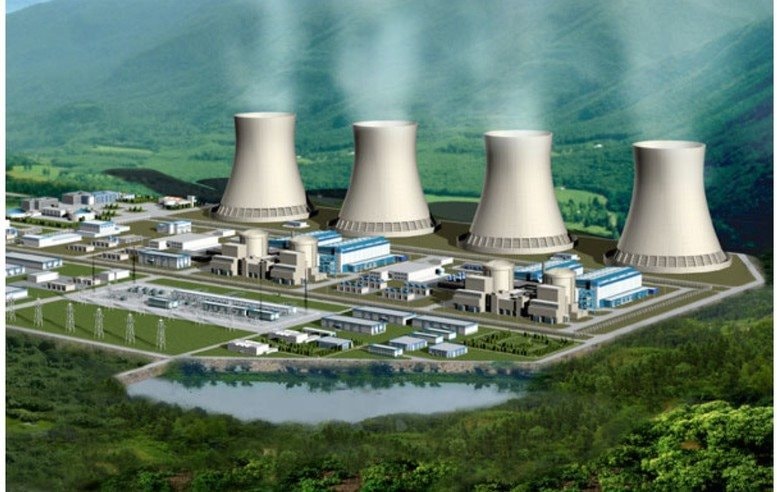
Vietnam restarts the Ninh Thuan nuclear power project. Illustration photo
In reality, Vietnam has restarted the Ninh Thuan nuclear power project and aims to complete it within five years. The Ninh Thuan 1 nuclear power plant will be located in Phuoc Dinh, Thuan Nam district, while the Ninh Thuan 2 plant will be in Vinh Hai, Ninh Hai district. The Vietnam Electricity Group (EVN) and the Vietnam National Oil and Gas Group (Petrovietnam) are the investors for these two plants, respectively.
According to experts, Vietnam will need approximately 4,000 personnel for these two nuclear power plants by 2030. The first plant is expected to be operational by 2030 or late 2031 at the latest, ensuring the country’s economic and social development.
“French Conglomerate Aims to Join the High-Speed North-South Railway Project”
On the morning of June 11, local time (afternoon in Hanoi, Vietnam), Prime Minister Pham Minh Chinh met with leaders of several leading French and European corporations during his bilateral activities in the Republic of France. This included a meeting with the transportation giant, Alstom.
“Deputy Prime Minister Bui Thanh Son Meets with Perenco Group CEO”
“As part of Prime Minister Pham Minh Chinh’s visit to France, Deputy Prime Minister and Foreign Minister Bui Thanh Son met with Perenco’s Executive Director, Armel Simondin, on the afternoon of June 10th, local time. With Anglo-French roots, Perenco is a prominent energy company with a strong global presence, including collaborative oil and gas ventures with partners worldwide, among them, Vietnam.”
“Mega Project”: $67 Billion High-Speed Rail Link Proposed by Vingroup and Thaco to Connect North and South Vietnam, Requiring 490 Ha Land Reclamation in Dong Nai Province.
The high-speed rail line, spanning a length of nearly 82km through Dong Nai province, cuts through the districts of Xuan Loc, Cam My, Long Thanh, Nhon Trach, and the city of Long Khanh. This state-of-the-art transportation system promises to revolutionize travel across Vietnam, offering a swift and efficient connection between the north and south regions.

